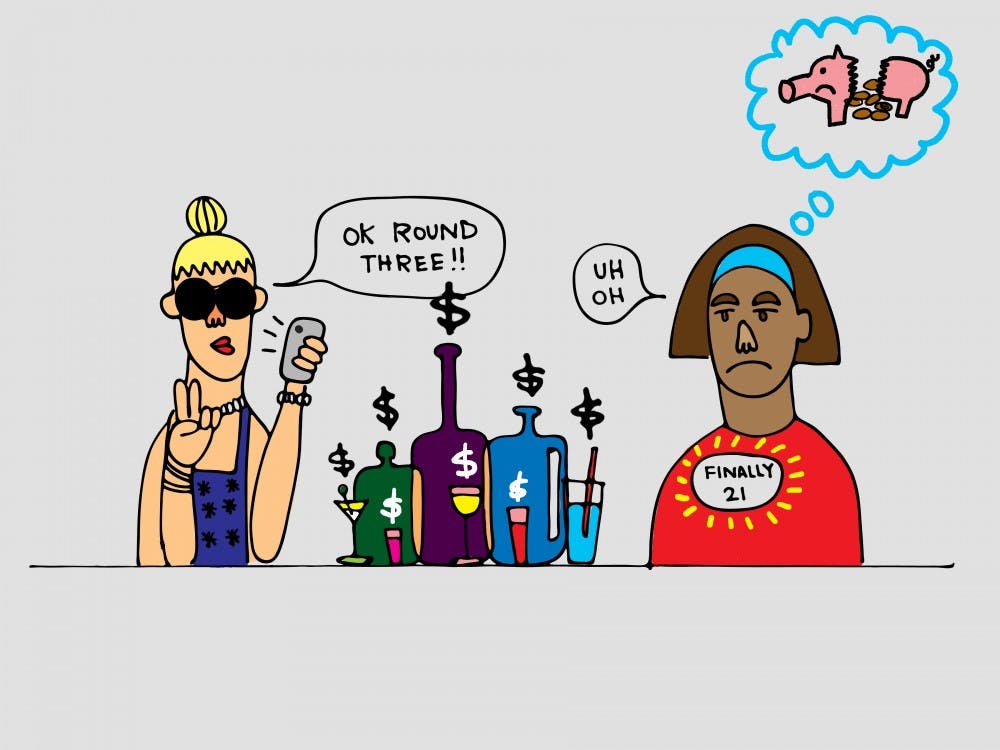It is Friday night and Sara Tanveer is lining her eyes and curling her hair, ready for a night out on Mill Avenue. As a newly turned 21-year-old, it is her prerogative. However, it can be tricky balancing going out with friends while on a student budget.
A big factor in students’ decision to go out involves the phenomenon called fear of missing out, or FOMO. FOMO is defined as “pervasive apprehension that others might be having rewarding experiences from which one is absent.”
A study found that nearly three quarters of young adults have experienced FOMO.
“I think about FOMO a lot because I’m in college," Tanveer, a biology student at ASU, said. "It’s supposed to be the best four years of your life, and I don’t want to look back and think there was so much I missed out on. This is the time I should be living it up compared to any other time in my life.”
However, “living it up” comes with an additional charge of around $6 to $12, the average price of a drink at a bar.
Today eating and drinking is a social experience, especially for many college students who can legally drink for the first time.
“Since I just turned 21 the excitement is still there, so if I go out to eat I usually get a drink too, and drinks are not cheap,” Tanveer said.
A study found on average, a student working part time makes $81 each week, while they spend an average of $18 to $25 a week on alcohol. This means some are spending up to 30 percent of their monthly income on alcohol alone. This does not consider other costs of going out such as cover charges or paying for an Uber or Lyft.
The proportion of money spent on alcohol to income is extremely high, especially as going out continues to stay part of students' agendas, and FOMO continues to influence patterns of going out each weekend.
“I typically go out twice a week so I feel justified; I feel like what I’m doing is not bad because I want to go out and have fun,” Tanveer said. “I try to cut down the cost somehow, but I won’t ever not go out because I don’t have the money.”
Balancing your budget while experiencing FOMO is something students should learn how to calculate. Before you go out ask yourself, “if I wasn’t going out what would I be doing?”
Next, put a value on that next best alternative. If the value you put on that is equal to or below the cost of going out — cheers! Head to your favorite bar. In other words, calculate your opportunity cost.
Before you go out for food or drinks, have a figure in mind that you are willing to spend, and try not to go over that figure. Surround yourself with people who know their financial limits and try not to mirror those friends who tend to have higher budgets.
As the weekend approaches, go out and have fun, but don’t be afraid to stay in sometimes and raise a (much cheaper) glass to not letting FOMO control your finances.
Reach the reporter at hehillst@asu.edu or follow @hollyhillsten on Twitter.
Editor’s note: The opinions presented in this column are the author’s and do not imply any endorsement from The State Press or its editors.
Want to join the conversation? Send an email to opiniondesk.statepress@gmail.com. Keep letters under 300 words and be sure to include your university affiliation. Anonymity will not be granted.
Like The State Press on Facebook and follow @statepress on Twitter.




